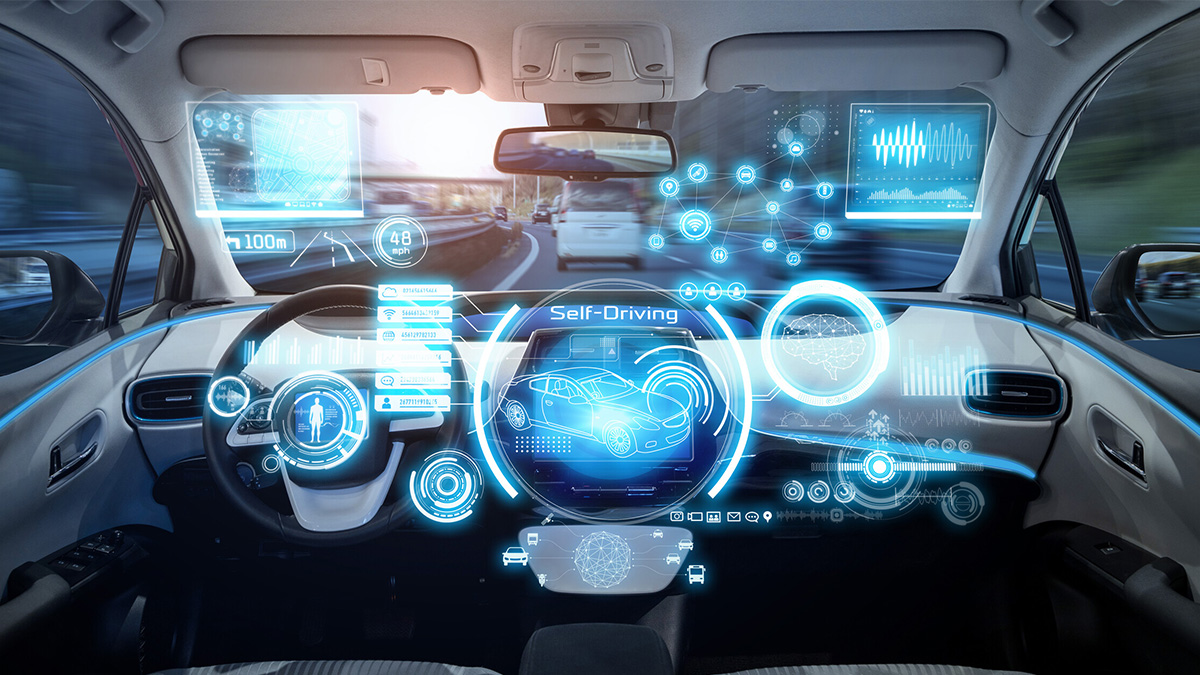Through machine learning and neural networks, AI technologies power self-driving car systems that can drive autonomously. A self-driving car is a vehicle that uses a combination of sensors, cameras, radar and artificial intelligence (AI) to travel between destinations without a human operator. To qualify as fully autonomous, a vehicle must be able to navigate without human intervention to a predetermined destination over roads that have not been adapted for its use.
The beginning of the 20th century saw the automobile as mainly a plaything for the rich. To be able to own a car, you had to have a chauffeur conversant with the mechanical nuances of the models. Then Henry Ford entered the scene. He was not the inventor of the motor car but he worked on his determination to build a simple and an affordable car for the average American worker. This saw the birth of the assembly line production technique. This led to other automobile companies of the time to come up with innovations promoting faster, efficient and cheaper models.
With the advent of artificial intelligence, the automotive sector is now poised for another breakthrough in transportation with cars that can drive themselves. This time around, the race for supremacy is mostly concentrated amongst the corporate and technology giants – Tesla, Uber, Waymo, Ford, and General Motors.
Features of Cars with Self-Driving
Google's Waymo project is an example of a self-driving car that is almost entirely autonomous. It still requires a human driver to be present but only to override the system when necessary. It is not self-driving in the purest sense, but it can drive itself in ideal conditions. It has a high level of autonomy. Many of the cars available to consumers today have a lower level of autonomy but still have some self-driving features. The self-driving features that are available in many production cars as of 2019 include the following:
Hands-free steering: Centers the car without the driver's hands on the wheel. The driver is still required to pay attention.
Adaptive cruise control (ACC) down to a stop: Automatically maintains a selectable distance between the driver's car and the car in front.
Lane-centering steering: Intervenes when the driver crosses lane markings by automatically nudging the vehicle toward the opposite lane marking.
Levels of Autonomy in Self-Driving Cars
The U.S. National Highway Traffic Safety Administration (NHTSA) lays out five levels of automation, beginning with Level 0, where humans do the driving, through driver assistance technologies up to fully autonomous cars. Here are the five levels that follow Level 0 automation:
Level 1: An advanced driver assistance system (ADAS) aids the human driver with steering, braking or accelerating, though not simultaneously. An ADAS includes rearview cameras and features like a vibrating seat warning to alert drivers when they drift out of the traveling lane.
Level 2: An ADAS that can steer and either brake or accelerate simultaneously while the driver remains fully aware behind the wheel and continues to act as the driver.
Level 3: An automated driving system (ADS) can perform all driving tasks under certain circumstances, such as parking the car. In these circumstances, the human driver must be ready to retake control and is still required to be the main driver of the vehicle.
Level 4: An ADS can perform all driving tasks and monitor the driving environment in certain circumstances. In those circumstances, the ADS is reliable enough that the human driver needn't pay attention.
Level 5: The vehicle's ADS acts as a virtual chauffeur and does all the driving in all circumstances. The human occupants are passengers and are never expected to drive the vehicle.
Benefits of Artificial Intelligence in Self-Driving Cars
In order to understand how the integration of artificial technology will affect the automotive industry, let’s look at some of its expected positive impacts on our daily life.
Improved Vehicle Safety
The role of artificial intelligence in vehicle safety is visible in the current generation of cars. A majority of cars offer safety picks like emergency braking and lane control. Such features function through the AI system by using cameras and sensors.
Predictive Driving Capabilities
Although predictive driving is part of safety features in self-driving cars, the groundbreaking innovation deserves a separate mention. It is no longer limited to movies when cars can communicate with each other to exchange data.
The broadcast of information like road accidents, weather conditions or heavy traffic on a network will allow artificial intelligence in cars to counter situations via appropriate decisions.
Traffic Management
Traffic is the bane of every vehicle driver. No one likes to get stuck while going to work or a business meeting. This often leads to uncertain events due to hasty decisions and a lack of focus on the traffic rules.
Independence for Disabled People
Disabled people have to rely on others when it comes to driving. With self-driving cars, they can rely on artificial intelligence. Just look at the summon feature of Tesla. It allows cars to leave the parking premises and drive to the owner. In the future, such features can manifest creative innovation to make the daily life of disabled people almost independent.
Impact On Overall Cost
One may think that such innovation will come at a steep price. You may be right but think about the technology and all the advancements self-driving cars will bring to your driving experience. Moreover, when self-driving cars are standardized, you will have access to both budget and expensive variants.
Apart from the purchase expense, the maintenance and insurance premiums will go down as well. Since artificial intelligence is designed to operate cars safely, there won’t be many accidents. The system will also warn users of any prior maintenance issue before it leads to a breakdown or other expensive repairs.
Safety and Challenges of Self-Driving Cars
Autonomous cars must learn to identify countless objects in the vehicle's path, from branches and litter to animals and people. Other challenges on the road are tunnels that interfere with the Global Positioning System (GPS), construction projects that cause lane changes or complex decisions, like where to stop to allow emergency vehicles to pass.
The systems need to make instantaneous decisions on when to slow down, swerve or continue acceleration normally. This is a continuing challenge for developers, and there are reports of self-driving cars hesitating and swerving unnecessarily when objects are detected in or near the roadways.
With crashes also comes the question of liability, and lawmakers have yet to define who is liable when an autonomous car is involved in an accident. There are also serious concerns that the software used to operate autonomous vehicles can be hacked, and automotive companies are working to address cybersecurity risks.
In China, carmakers and regulators are adopting a different strategy to meet standards and make self-driving cars an everyday reality. The Chinese government is beginning to redesign urban landscapes, policy and infrastructure to make the environment more self-driving car-friendly. This includes writing rules about how humans move around and recruiting mobile network operators to take on a portion of the processing required to give self-driving vehicles the data they need to navigate. "National Test Roads" would be implemented. The autocratic nature of the Chinese government makes this possible, which bypasses the litigious democracy that tests are funneled through in America.



.jpg)









.jpg)
.jpg)